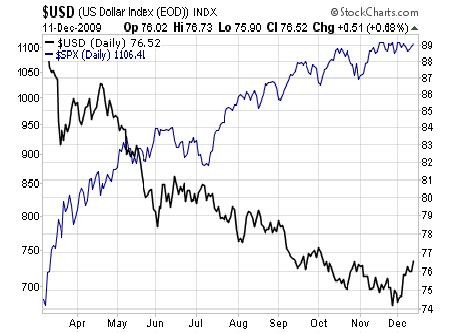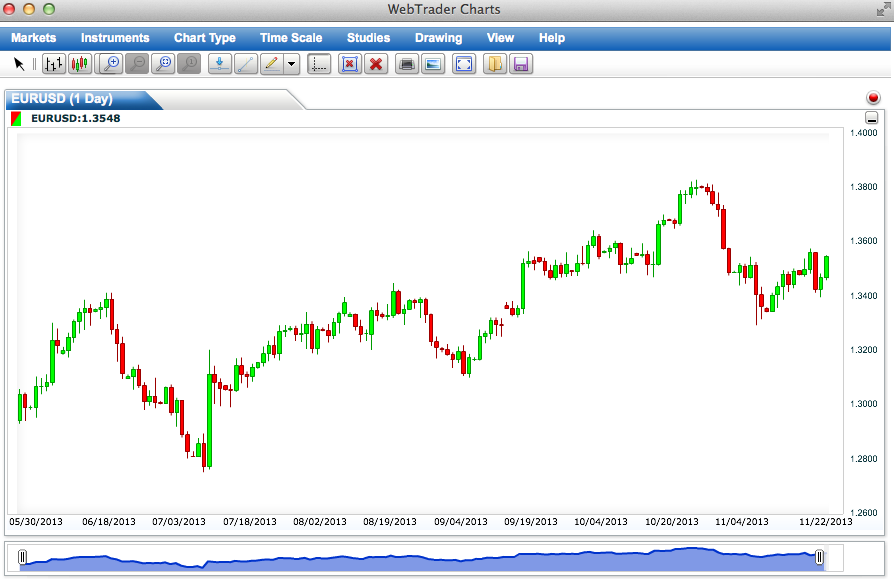Sentiment Carry Trade (Forex)
Post on: 20 Октябрь, 2015 No Comment

Updated 10-01-2010 at 09:56 AM by Magic
The Foreign Exchange (ForEx )
I’m not that versed in Forex, but one strategy is in trading the pairs is the same: find a low interest currency and borrow it to lend on a higher interest currency. However, most Forex traders, to my knowledge, don’t play the Carry Trade, interest rates, but trade the market moves, the exchange rates, which is shorter term. Because of the liquidity of the largest market in the world, moves on average are very small so the trader must use leverage to make a good profit. Of course, this is not true when relative drops in liquity cause volatility to rise making the swings larger. But this brings another problem to the forefront: getting whipsawed especially on low funded accounts where tighter stops are necessary.
Ok, now the Carry Trade in Forex, like has been said, is about Interest rates and can have a major effect on how certain currency pairs are traded. For some traders looking at a long term trade, the practice of collecting rollover comes into effect. Rollover is when interest is figured out between the currency pairs each day and paid to you or from you. Different currencies have different interest rates, and collecting the spread between the currencies interest rates is where the Forex carry trade comes in.
Forex traders performing this type of strategy are obviously looking to earn both yield from the interest rates spread and the appreciation of the currency pairs — the exchange rate: it is crucial in this strategy to determine in which currencies the carry trade will produce the higher returns with a low level of risk. So, a carry trade is a longer term trade going, at least, one full day which results in collecting interest. This is called Rollover — Interest earned or paid for holding a position overnight.
Here are the basics:
If you buy the EUR/USD, you’re buying the EUR and selling the USD
If you sell the EUR/USD, you’re selling the EUR and buying the USD
When you buy the higher yielding currency, you earn rollover
When you buy the lower yielding currency, you pay rollover
Higher interest rates usually lead to a high currency value
Lower interest rates usually lead to a lower currency value Ultimately, Carry Traders are concerned with interest rate expectations, not just interest rates alone. Now, here are the basics taking into consideration the exchange rates:
Buy the currency with the higher interest rate that will continue rising
Sell the currency with the lower interest rate that will continue falling
As dailyfx.com puts it, you can collect consistent income in times of low volatility and high risk appetite.
This is actually a good example of the intersection between a market discourse and underlying economic fundamentals. Beginning with the latter they are easy for anyone to see. Basically, the uncovered interest parity does not hold and thus, currencies who hold a high interest rate do not seem to appreciate relative to those holding a low interest rate. This creates a natural opportunity for arbitrage but since it is essentially uncovered arbitrage it also becomes a bet on certain kinds of market fundamentals. These fundamentals are exactly represented by factors that pertain to market volatility and the well being, at any point in time, of risky assets.
[Hedge Fund manager Claus Vistesen, of Alpha.Sources and Beta.Sources]
If only it were that simple.
Now, about those underlying fundamentals.
As shown in the previous entries, there are several fundamental factors within a country that moves their market. The prices of various currencies are affected by inflation, industrial production and unemployment. So a poor economy leads to a high rate of unemployment, etc. The chart below illustrates what can happen. The jump came when the Reserve Bank of New Zealand announced it would keep its benchmark overnight interest rate, the Official Cash Rate, at 3%.
Here are the rates of some fundamental factors at that time:
The second quarter Unemployment Rate was 6.8%, much higher than the 6.0% in the first quarter and the 6.2% that was expected. Employment decreased 0.3% quarter-over-quarter when a 0.4% increase was expected.
Manufacturing Activity Volume for the second quarter, a figure which excludes price changes, fell to the lowest level in a decade.
The Business Performance of Manufacturing Index for August fell to 49.3, the lowest since August 2009. A number below 50 signifies contraction.
A slower growth outlook and more moderate interest rate expectations reduce the appeal of the New Zealand Dollar, particularly its appeal as a carry trade. Moreover, in the bigger picture, the Official Cash Rate remains relatively low. At 3%, the rate is up only 50 basis points from the all-time low level of 2.5%, and well below the 8.25% rate that existed during the most recent peak in 2008. For perspective, the Australian Cash Rate target is at 4.5% versus the 7.25% 2008 peak.
Basically, I try to stay very close to the data. Many macroeconomists today often come up with nonsensical and useless arguments because they are not close to the data and because they are essentially untrained in the handling and interpretation of real world data. Modern macroeconomists today have to rely much more on the interpretation and study of real world data than tinkering in the theoretical ivory tower (even if the latter is still important). I hold good data interpretation and the knowledge of where to find accurate, reliable, and continuously updated data on your specific area of interest to be one of the most important skills of modern macroeconomists. Macroeconomic data today is largely free and almost universally accessible for anyone with a decent internet connection and the knowledge of where to find it. I try to use this fact as much as possible in the analyses I do.
[Hedge Fund manager Claus Vistesen, of Alpha.Sources and Beta.Source s]
More Market Timing Correlations?
Funding investments in higher-yielding currencies with dollar-denominated loans lost money for investors earlier this year, in part because the dollar was rising. With the USD falling once again and a Fed rate hike pushed further into the future, the strategy is looking good. But, volatility causing exchange-rates swings tend to erode the carry trade’s profits. Though a greater certainty about the direction of currencies might slow down the volatility.
Technical Factors
This is a great trade if you make sure you put on the trade during an economic expansion with low volatility. But there are other technical factors.
As a swing trader using this strategy you will most likely be looking for a pair which is non-trending and the interest rate spread is high on the base currency. At the end of the trading day, the broker will close and re-open your position again automatically and will either pay you the interest gains. You will be earning money everyday the pair stays in the trade.

For example, let’s say the interest rate for a commercial loan in United States is 2% and the same loan in Australia has a rate of interest at 5%. An investor will take out a loan with the 2% interest rate in US (borrow the USD — the USD is the base currency in the pair) and exchange it for Australian dollars (loan to the AUD — the AUD is the counter currency). If there are no market fluctuations, this carry trade will earn a profit of 3% without having to invest a single penny of his own.
The biggest risk factor, of course, is the uncertainty of exchange rates. If in the example above of the Australian dollar weakens or devalues the investor will face substantial losses and they still have to pay back the debt in US dollars.
It’s about risk appetite vs risk aversion. In hard or uncertain times, risk aversion can mean a reversal of carry trades. If volume slackens it potentially leads to higher market volatility and the carry trade unwinds. The Carry Trade, which is down 5.9% in the year-to-date, means the long currency must either appreciate or remain constant. So, when volatility is high – as it has been over the last 2-3 years – this is a losing strategy.
Certain Forex currency pairs have a tendency to catch a long term upswing when interest rates change, in part because a large number of traders will specifically look for the opportunity to take advantage of these pairs and the interest positive rates that they offer. This can be a very beneficial long term trade strategy.
If you’re considering a long term position with a currency pair, the interest rate may be a major consideration since up to a quarter of your profits from a long term Forex carry trade may come from the positive interest being credited to your account. Not a bad way to go, making profit from the interest of leveraged money.
Investing in a Country that pays high interest rates is riskier that investing in a country that pays lower interest rates because a developing country (see: Emerging Markets in the previous entry), thirsty for money will want to attract what it needs by encouraging investors and forex traders with higher returns for their money. However, it is the forex trader that must be willing to take its chances after carefully evaluating the multiple factors coming into the picture.
I’ve been looking into a possibility (and discussing it via PMs with 3D_fx) of an index for the carry trade. There are those who manage a portfolio of certain currencies based on the G7 or G10. But I’ve been thinking more about something based on the fundamental factors. such as:
the overnight rate
growth rate
unemployment rate
inflation rate and.
and, maybe, the LIBOR (my next area of study) for that country or region, like the Euribor, TIBOR, etc.
Then make an MT4 (aparently, no other platform will use external data files) MA indicator that would have the Base currency green and the Counter currency red. Then, when green is higher look to go long, and to short the red when it’s higher.
Problem is — getting the historical data.
The carry trade, which is also known as the Forward Rate Bias, generally had positive returns between about 2002 through 2007. However, performance fell sharply in 2008, delivering a -17.1% return measured against the London Interbank Offered Rate in dollar terms, according to data provided by Credit Suisse based on Credit Suisse FX Metrics indexes. Carry trades have since recovered, but results are still mixed, with a 1.7% year-to-date return over LIBOR as of Sept. 15.
[Matthew Roberts, investment consultant at Towers Watson & Co.]














